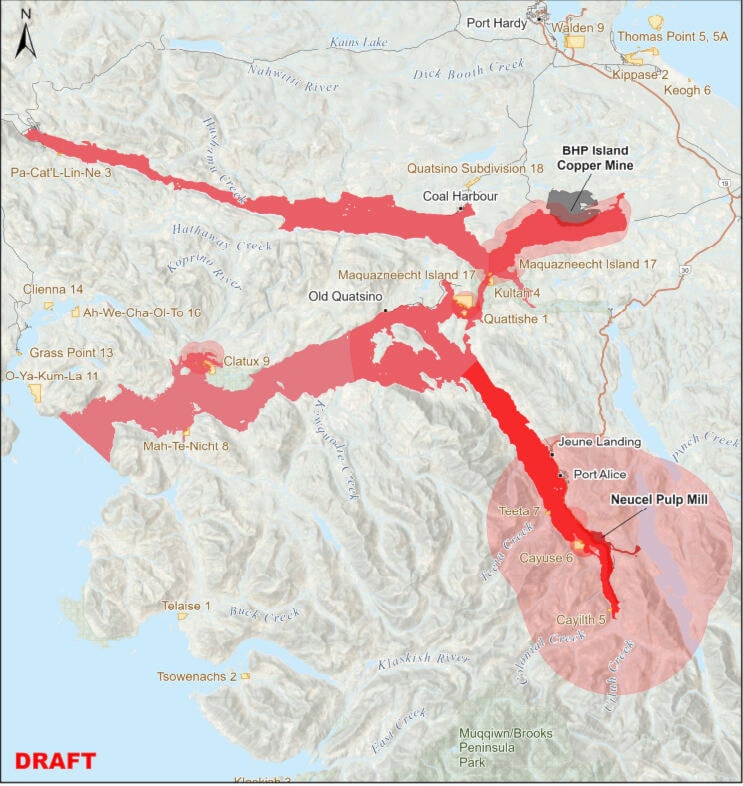Dear editor,
We, the Quatsino First Nation, have sent a delegation of councillors to an international conference to raise awareness of the impacts of contaminated sites in our territory.
The sites continue to significantly disrupt our ability to meaningfully exercise our protected rights. We will not stand by. We are reclaiming our stewardship of our lands and waters, and are taking steps to raise the issue of contamination in our territory on the international stage and address the main polluters in our territory.
BHP Island Copper, which operated one of the largest mines in the world from 1971 to 1995 in our territory, has left 850 million tonnes of tailings in Rupert Inlet. This used to be an area we relied upon for healthy marine life to feed our families and pass our culture on to future generations. To give a feel for the volume of the tailings that are in our lands, the 2017 Mount Polley tailings failure released eight million cubic metres of tailings. We are living with about a hundred times more tailings and waste rock in our ocean.
These impacts are further compounded by the abandoned Neucel pulp mill that operated in our territory for over 100 years and discharged contaminants into the Neroutsos inlet, in the heart of our territory and directly across from our reserve. The last owner declared bankruptcy and left the marine inlet with contaminants, including mercury runoff from contaminated landfills.
There is very little information about the magnitude of the impacts of the BHP and Neucel contaminated sites on the health of our lands, waters and community. Quatsino citizens are certain they need to avoid these areas - and they do. The map included here shows the areas that our families continue to avoid entirely, due to massive fish kills, reduced marine life in Rupert Inlet, and the changes in the colour of the water in Neroutsos Inlet that Quatsino has observed over the mill site’s operation. We have seen these waters turn red from sulphur. When children swam in the area, they often had burns on their skin afterwards.
During the time of these two projects, we experienced absolutely no benefits at all. Some of our members had jobs, but we received no revenues or royalties. We have only seen impacts.
Our Nation, however, is standing up to take charge. We are the rightful landowners, and it is our responsibility to restore the land back to its rightful state. Our end goal will always be to restore our territory to a standard where we can once again safely, and without fear of health impacts, harvest in our lands and waters and pass these practices on to our children. We are quickly learning how this is overlooked by external government standards for reclamation. We must be at the table and take the lead on developing clean up standards that restore and protect our rights for future generations.
We have called all government departments to the table, as well as the company that still holds the licenses to the former BHP Island Copper mine. However, negotiations are slow. The government continues to offer piecemeal funding agreements that we are patching together to try and take stewardship of the massive environmental liabilities. And both industry and government have yet to accept their obligations for providing us with redress for the legacy of impacts of these sites on the health and well-being of our Nation – economically and culturally.
We must be the leaders of remediation programs in our territory – we know our lands and waters the best and we will be here when industry leaves.
Our intent is to restore our cultural connection to our lands, and our rights on the land.
This requires that we can harvest in all areas where we historically practiced our rights.
Chief Tom Nelson and council of the Quatsino First Nation
